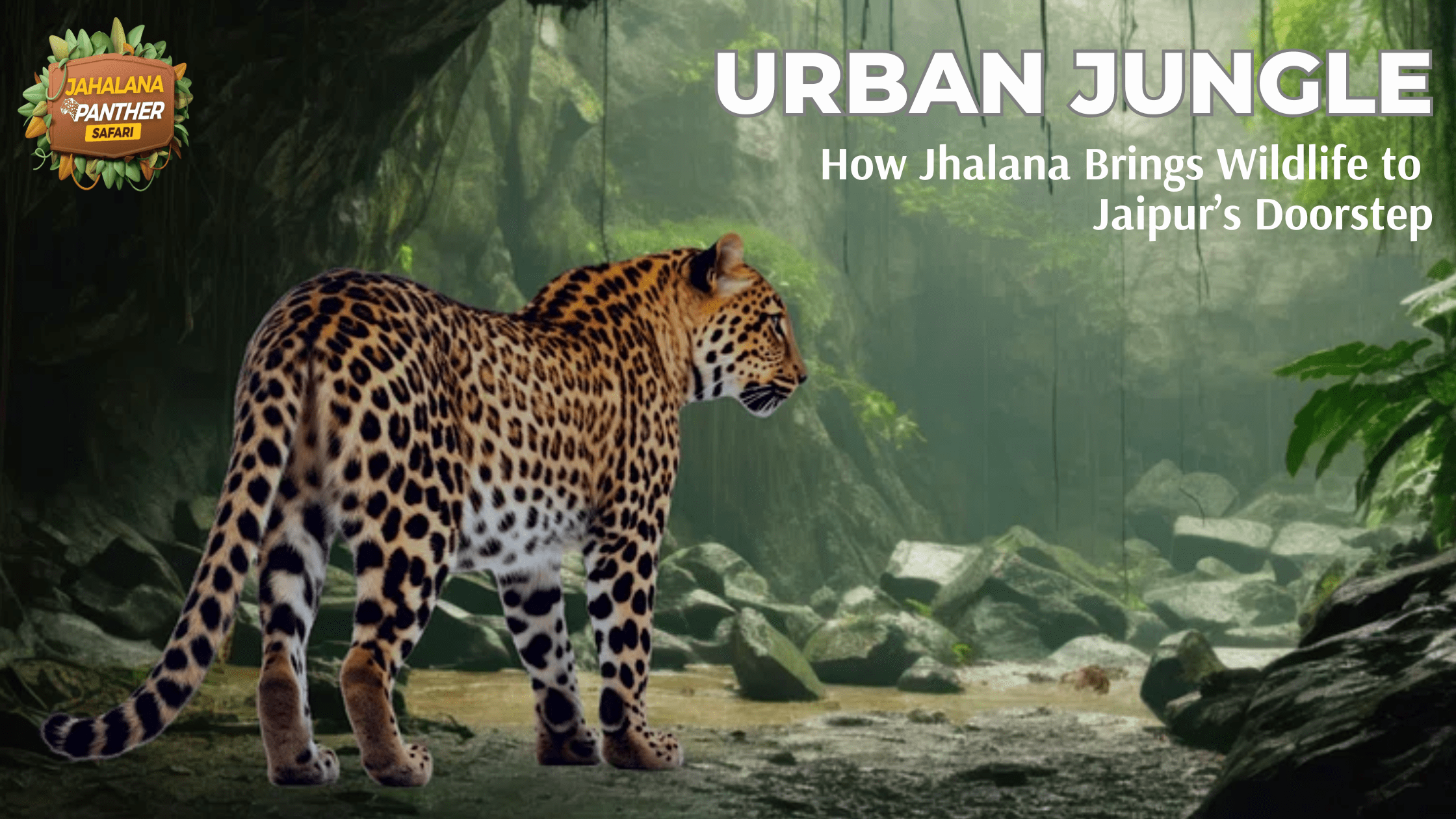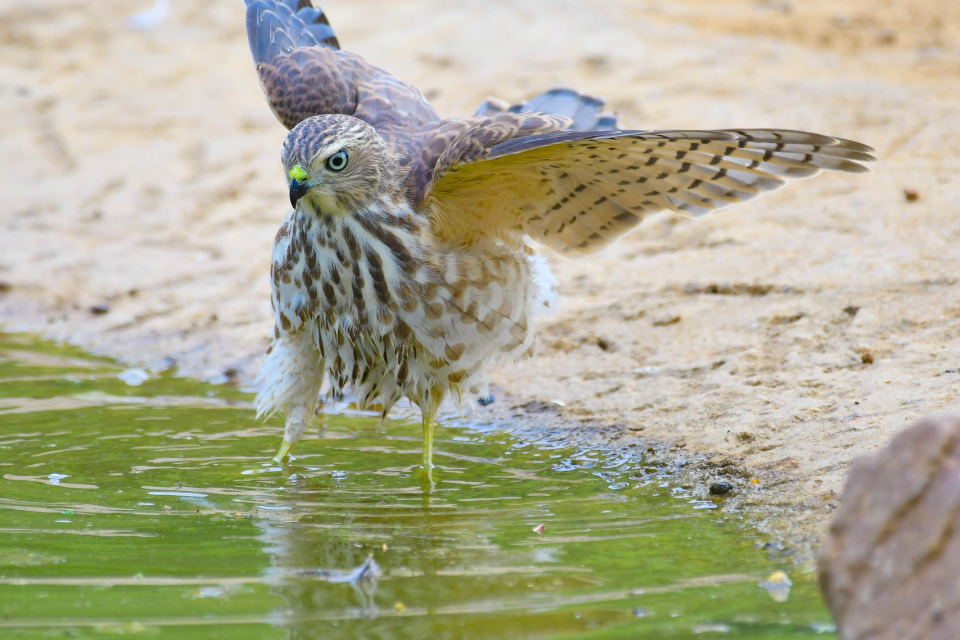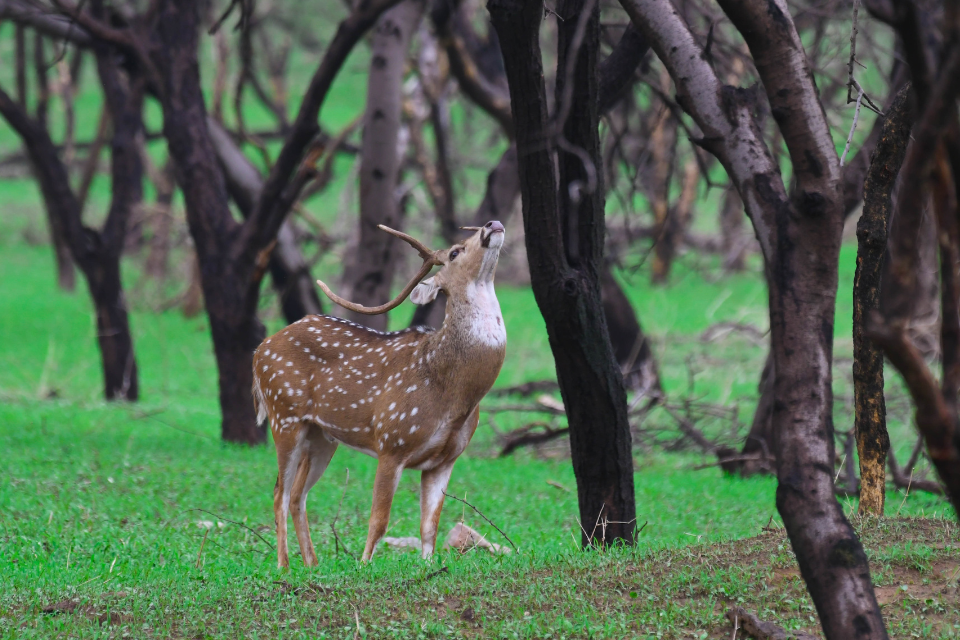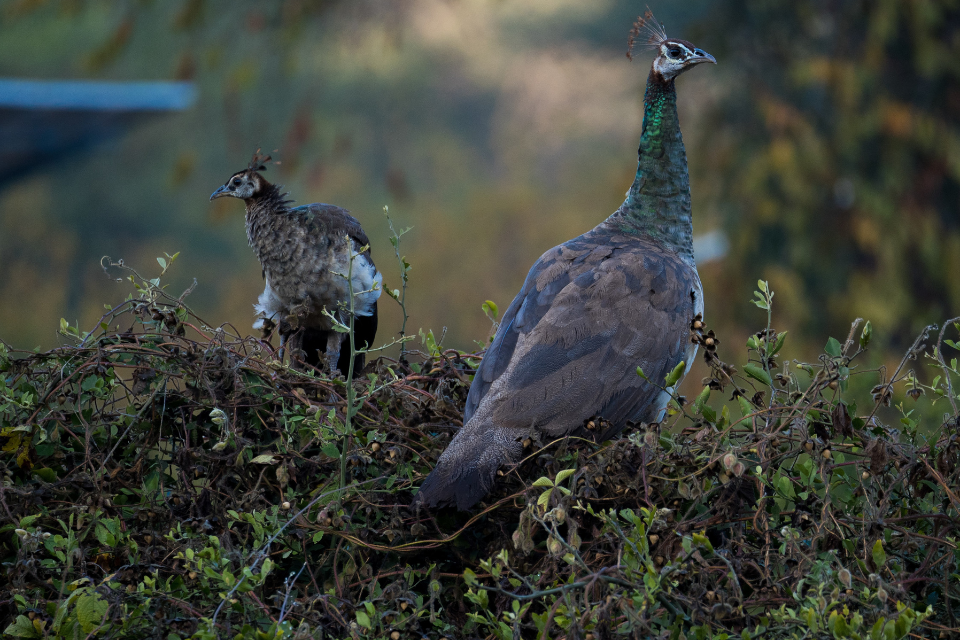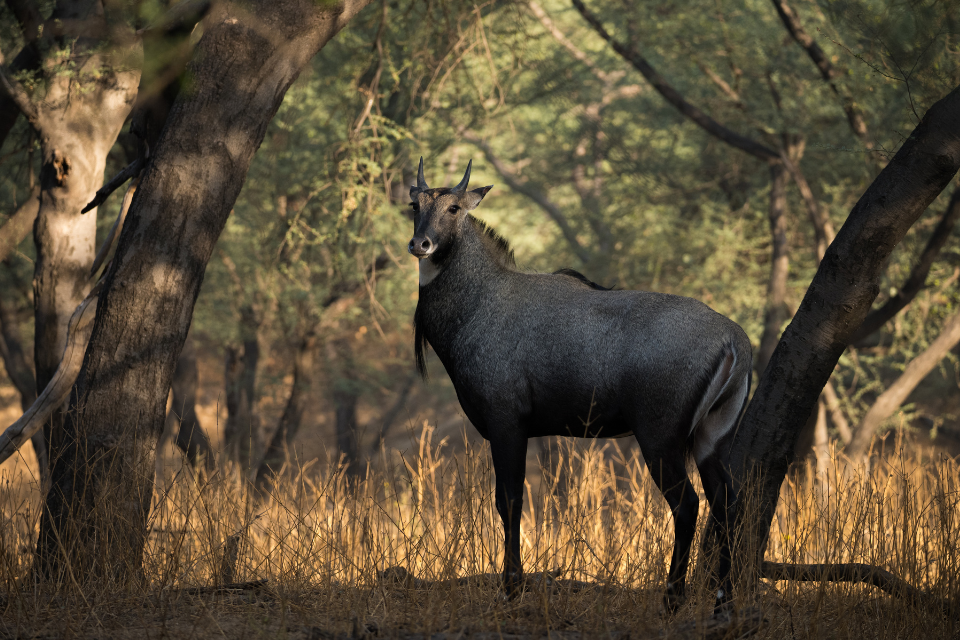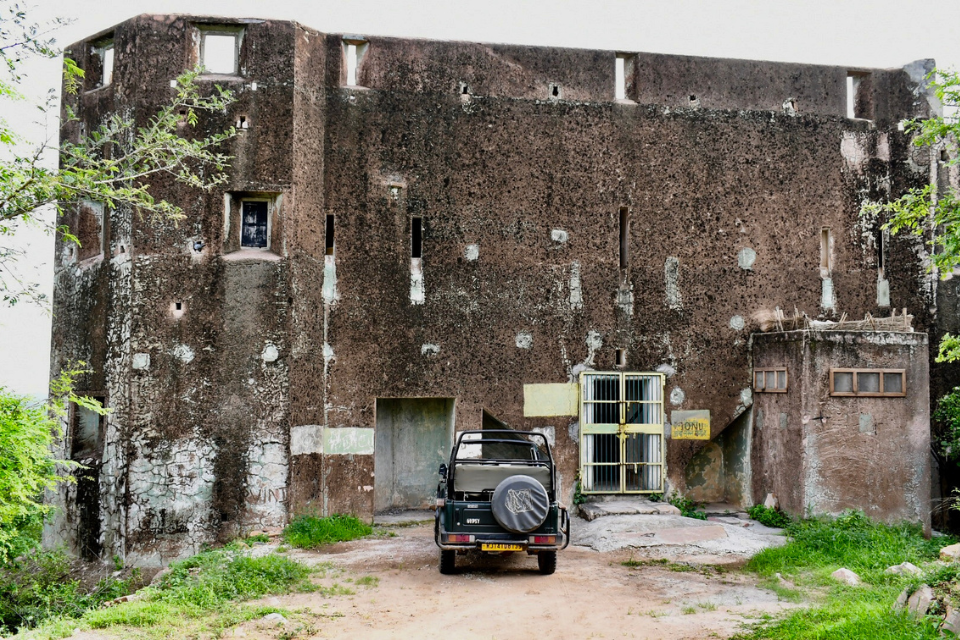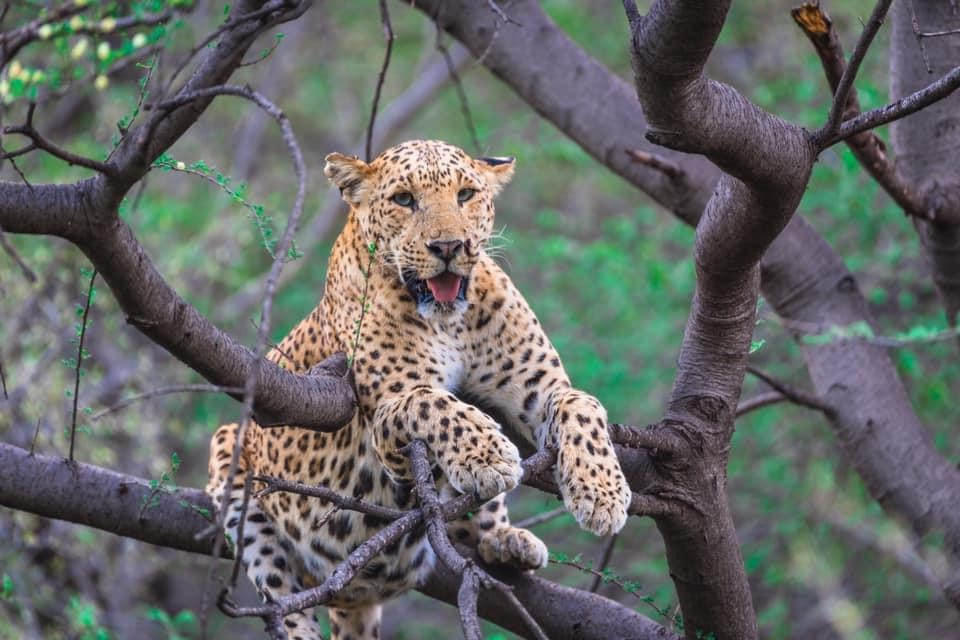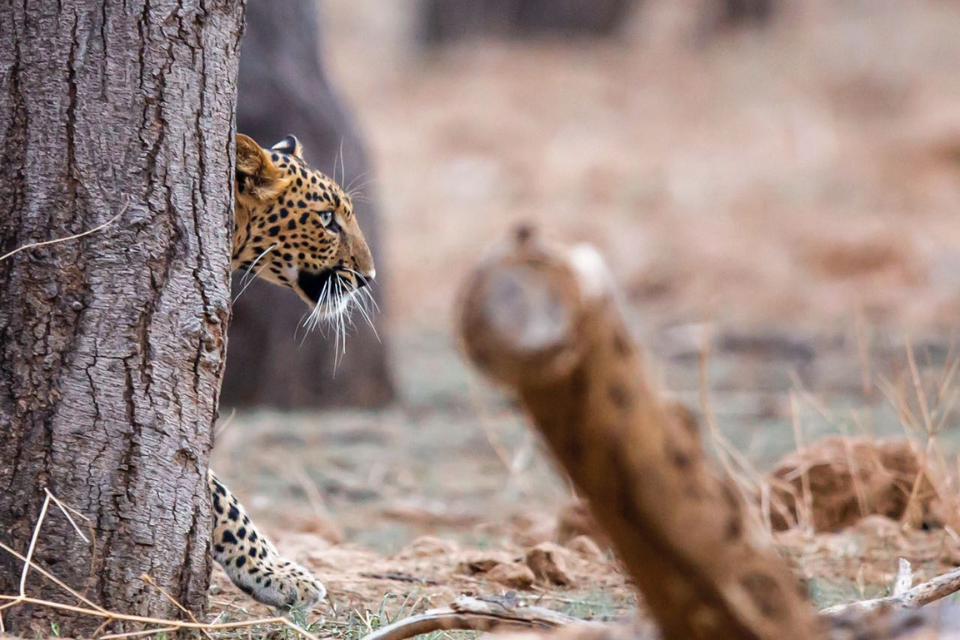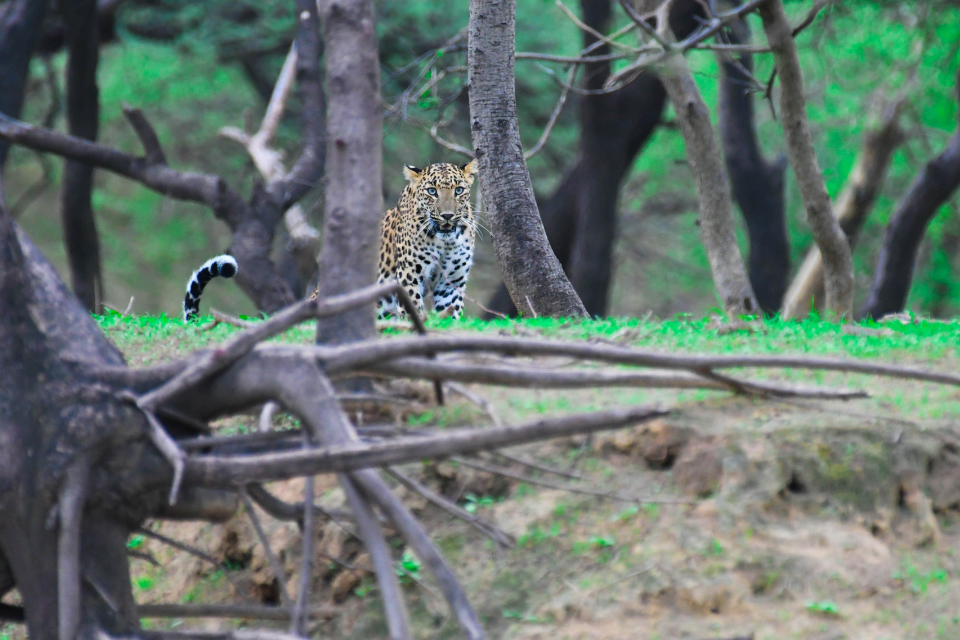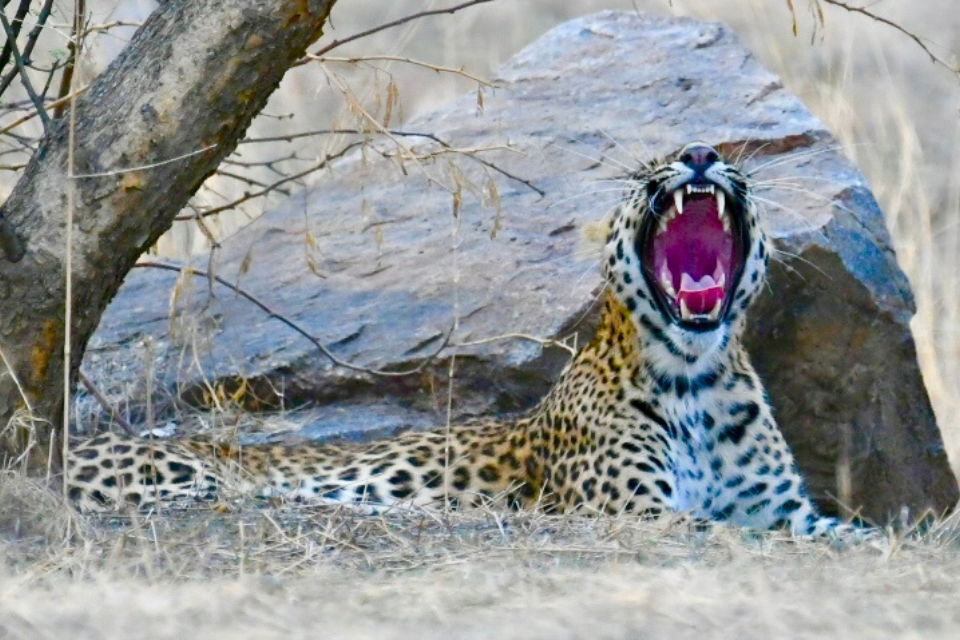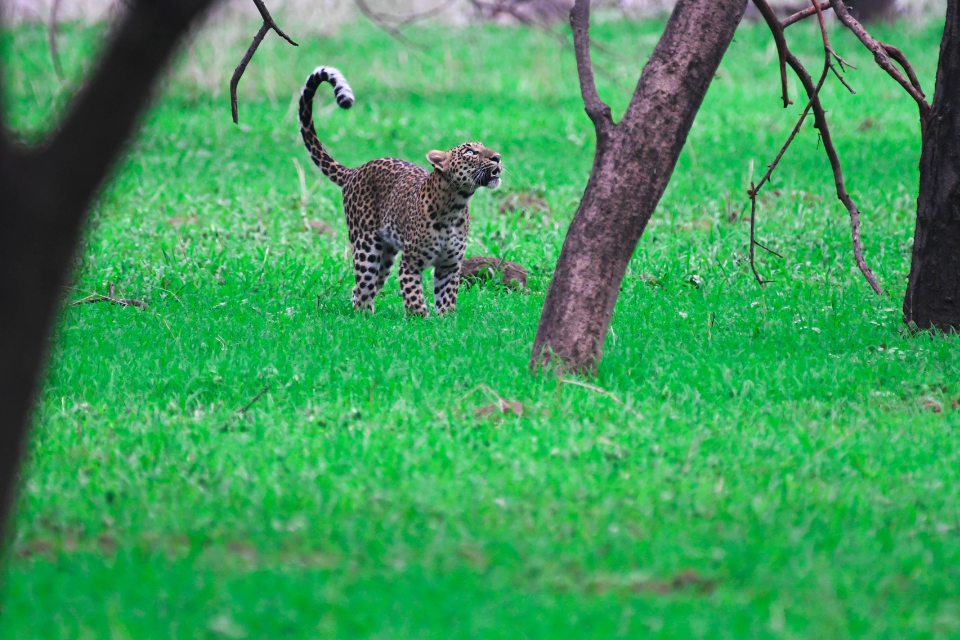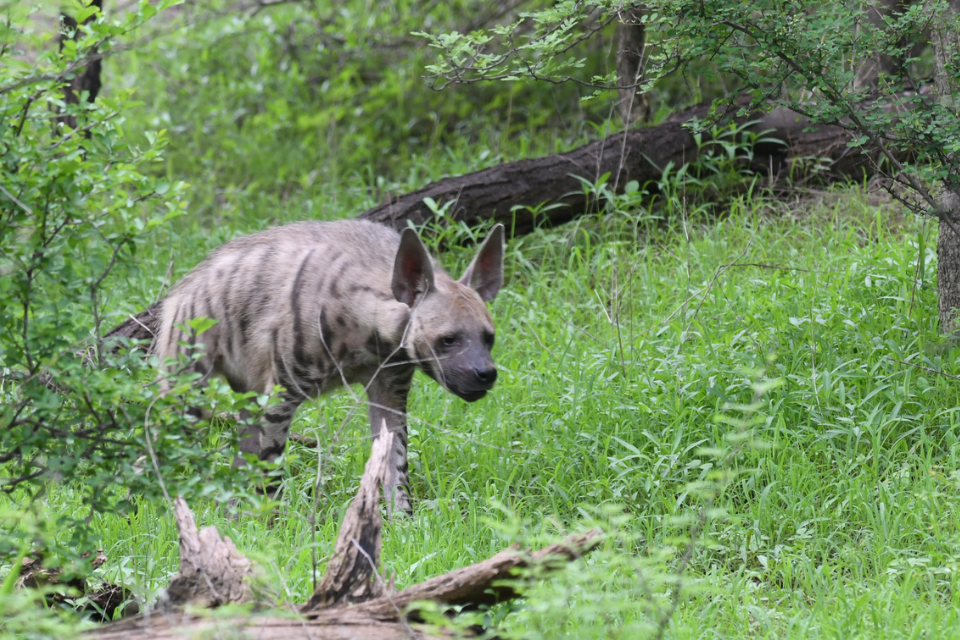- September 11, 2025
Urban Jungle: How Jhalana Brings Wildlife to Jaipur’s Doorstep
Jaipur has many identities—the Pink City of palaces, a modern hub for food and crafts, and, increasingly, an urban sanctuary where wild leopards still rule the rocky Aravallis. Just 20–30 minutes from malls and metro stations, Jhalana Leopard Reserve offers a safari experience that feels improbable and magical: you leave a noisy artery road, pass a forest gate, and within minutes you’re scanning scrub slopes for the flick of a spotted tail.
This guide unpacks how Jhalana became India’s first dedicated leopard reserve (2017), why it thrives despite the city’s expansion, what you’ll actually see on a safari, and how to plan a respectful, rewarding visit—complete with ethics, booking tips, seasons, and FAQs.
What—and where—exactly is Jhalana?
Jhalana Leopard Reserve sits on Jaipur’s southeastern flank in the Aravalli hills. Compact by Indian protected-area standards—~20 sq km—it protects mixed scrub forest, rocky outcrops, and man-made waterholes that draw wildlife through the year. That small size is exactly what makes Jhalana so unusual: dense big-cat territory knitted to a living city, with towers, apartments, and ring roads not far from the boundary wall.
In 2017, Rajasthan launched Project Leopard, designating Jhalana as a leopard reserve and shifting its management to the Wildlife Wing. Jhalana’s success later inspired a sister site at Amagarh (opened 2022), and Jaipur is now known for multiple leopard-viewing options—a rare urban phenomenon in India.
How Jhalana became an “urban jungle”
1) Conservation by design. Jhalana’s step-change came when it was officially ring-fenced as a leopard reserve and received focused investment—boundary walls where needed, controlled routes, and regulated safaris. That formal status reduced grazing and woodcutting pressure and created a framework for coexistence.
2) Small area, serious cats. Peer-reviewed research (2017–19) documented 25 individually identified leopards using Jhalana, confirming an unusually high concentration for a tiny, city-adjacent forest. Later news reports and department updates often reference around 40 leopards in the greater Jaipur leopard landscape, showing a population that fluctuates with births, dispersal, and monitoring methods.
3) The city–wildlife interface. Because Jaipur literally surrounds parts of the reserve, you’re watching a live experiment in coexistence—leopards using scrub corridors and drainages while people commute, jog, and run businesses next door. Careful visitor management and rapid response to occasional strays into industrial or residential fringes keep conflict low by urban-India standards.
What you can see: beyond the leopard
Yes, people come for leopards—and Jhalana’s open scrub and rocky slopes can make sightings surprisingly frequent—but there’s more to watch for:
- Carnivores: striped hyena, golden jackal, Bengal fox, jungle cat, and, of course, the Indian leopard as the apex predator.
- Ungulates: nilgai (blue bull) and sambar; at waterholes, watch for herds arriving in the last light.
- Birdlife: from shikra and white-eyed buzzard to owlets, bee-eaters, drongos, and winter visitors. Camera-trap and field studies recorded 14 mammals and 18 bird species in baseline sampling, with broader checklists reporting much higher cumulative bird counts regionally over time.
Reading the landscape: Leopards here frequently perch on boulders and termite mounds, scent-mark on track junctions, and use culverts and natural drain lines as travel corridors—behaviors that make the Jhalana experience intimate and visual, especially in the golden hours.
When to go: seasons and visibility
- October–March (peak comfort): Crisp mornings, mellow afternoons, migratory birds, and long, pleasant safaris. Dry vegetation can improve visibility on slopes.
- April–June (hot but rewarding): Heat compresses activity around waterholes—photographers love this window for dramatic behavior at dusk.
- July–September (monsoon): The reserve turns lush; cats are active, but the green cover can make them harder to spot. Roads may be slushy; carry protection for gear.
Safaris typically run twice daily—a morning and an evening slot—shifting by season for sunrise/sunset. Always confirm current slots and availability on Rajasthan’s official OBMS portal when you book.
How to book your Jhalana safari (the clean, official way)
- Use the OBMS (Online Booking & Information System) of the Rajasthan Government to check live availability, prices, and gate details. Avoid last-minute tout markups in peak months and carry the ID used for booking.
- Choose your vehicle type (shared jeep/gypsy vs. full vehicle), date, and time slot. Book two drives minimum to balance the probability of a big sighting with the joy of slower tracking—fresh pugmarks, alarm calls, and birding.
- If you’re also curious about the city’s newer options, Jaipur now has additional leopard safari routes (e.g., Amagarh, and a third site at Maila Bagh under development). Each has its own habitat feel; Jhalana remains the original urban classic.
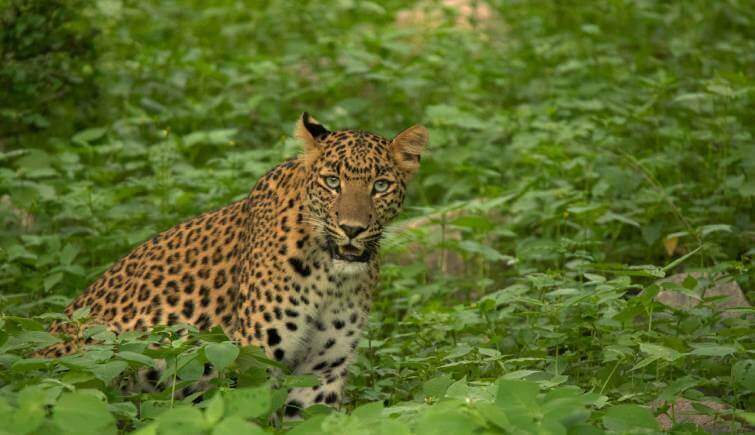
Getting there and practicalities
- By air: Jaipur International Airport (JAI) is the nearest; the main gates are a short taxi ride away.
- By rail: Jaipur Junction connects to major Indian cities; cabs or autos can get you to the entry gate quickly.
What to wear & carry: Neutral clothing, closed shoes, a light jacket in winter, hat/sunscreen year-round, and a scarf or buff for dust. Photographers should pack beanbags (no tripods inside vehicles), spare batteries, and rain covers in monsoon.
Seating: If photography is a priority, pay for a full vehicle to control angles. Otherwise, shared jeeps are friendly and cost-effective.
How Jhalana wins as an urban wildlife experience
1) Short transfer, maximum wild time. You can land at JAI, grab a chai, and be watching wild leopards before most destinations finish a highway drive. For busy travelers or families, Jhalana delivers the highest “safari minutes per day” of almost any Indian city break. (Confirm gate and slot on OBMS for exact logistics.)
2) Learning in real time. Jhalana is a classroom for urban ecology: how boundary design, waterhole placement, and route discipline shape animal movement. Scan tracks with your guide—jackal prints vs. small cat, or how sambar hooves score damp mud.
3) Big-cat storytelling—responsibly. Jhalana’s leopards are individuals with territories and histories—your guide may recognize a female by a torn ear or a male by rosette patterns. The best teams balance storytelling with respect: they do not crowd, do not call, and let animals choose the terms of encounter.
Ethics: sightings are a privilege, not a guarantee
- Keep distance. If multiple jeeps converge, your driver should rotate positions or wait away from the cat’s path.
- No baiting or sound lures. It’s unethical and illegal.
- Stay seated, silence phones. Quick movements and chatter cause flight responses, especially with cubs.
- Night conduct. No flash; avoid white LEDs pointed at animals.
- Community lens. Remember Jhalana is surrounded by neighborhoods and livelihoods. Your calm conduct is part of keeping coexistence possible.
Sample 1-day micro-itinerary
- Dawn safari (2.5–3 hrs): Enter with first light; check waterholes and rocky knolls. Track alarm calls, then slow down for birds as the sun climbs.
- Late breakfast & siesta: Back in town by late morning.
- City interlude: Explore stepwells or a café near Malviya Nagar—keep it light.
- Evening safari: Work ridge lines for silhouettes; end at a waterhole as the light drops.
- Dinner: Jaipur’s culinary scene is booming—Rajasthani thalis or a modern bistro, your call.
Photography cheat-sheet
- Focal lengths: 200–500mm for cats; 70–200mm for environmental frames.
- Shutter speed: Start at 1/1000s for moving cats; increase ISO as light fades.
- Compositions: Include context—jeep track curves, dwarf acacias, Aravalli ridges—to tell the urban-wild story.
Behavior cues: Watch ear angles and tail “twitches” signaling movement; pre-focus on likely crossing points rather than chasing.
Conservation, challenges, and what visitors can do
Jhalana’s growth comes with responsibilities. Studies note anthropogenic pressures at the city edge and the importance of monitoring prey base, traffic discipline on approach roads, and rapid response to straying juveniles looking for territory. Your choices matter:
- Book official; follow rules. It funds the right teams and keeps data clean.
- Choose operators who rotate vehicles at sightings and avoid crowding.
- Support science & local livelihoods. Buy from community-linked craft stalls; share photos with date/location removed if sensitive.
Peer-reviewed monitoring continues to refine what we know about species lists, individual leopards, and human–wild dynamics—evidence that this “urban jungle” can work when managed and respected.
Quick planning facts
- Area: ~20 sq km; scrub-forest Aravalli habitat.
- Established as leopard reserve: 2017; Jaipur later added Amagarh (2022).
- Leopard numbers: At least 25 individuals identified during 2017–18 research; recent reports often cite ~40 in the greater Jaipur leopard landscape. Numbers vary by season and methodology.
- Booking: Rajasthan OBMS portal (official).
- Access: Close to Jaipur Airport and Junction (short taxi/auto ride).
FAQs
Q1. Is Jhalana “guaranteed leopard sightings”?
No wildlife experience should promise guarantees. Jhalana’s density and open terrain boost your odds—book two drives for a realistic chance and enjoy the full spectrum: alarm calls, tracks, hyenas at dusk, and rich birdlife.
Q2. Morning or evening—what’s better?
Light is gorgeous both times. In warm months, evenings at waterholes can be electric; in winter, crisp mornings offer long, soft light and active birds.
Q3. How long is a safari and how many vehicles enter?
Typical drives last around 2.5–3 hours, with restricted vehicles per slot and fixed routes to limit pressure on animals. Check your ticket for the gate and reporting time on the official portal.
Q4. Is Jhalana safe for families and first-timers?
Yes—tracks are patrolled, guides are trained, and protocols are clear. Follow instructions, keep kids seated, and pack snacks and water.
Q5. Can I combine Jhalana with other Jaipur sights?
Absolutely. Many travelers do a dawn safari + city or city + evening safari day. If you’re keen on more wild time, consider a second drive or exploring Amagarh on another slot.
Responsible-visitor checklist
- Book on the official portal; carry the same ID used for booking.
- Wear neutral colors; no litter, no loud music, no feeding.
- Keep a jeep-length distance from big cats; rotate and don’t block paths.
- No flashes or spotlights; silence phones at sightings.
- Tip your guide and driver for patient, ethical viewing—not just for “big” sightings.
Conclusion: A wild heart that still beats within the city
Jhalana upends the old idea that you must vanish into remote wilderness to feel the thrill of big cats. Here, the wild is threaded through urban life—resilient, watchful, and astonishingly close. If you approach with respect and curiosity, your Jaipur itinerary gains something rare: a clear memory of leopard whiskers backlit by the last light as raptors circle overhead—and the gentle realization that cities and wildlife can, with care, coexist.
Disclaimer
Wildlife populations, timings, routes, prices, and vehicle quotas change based on management decisions and seasons. Always verify your booking details on the OBMS portal and follow on-ground guidance from forest staff. Sightings vary by weather and animal movement; no operator can guarantee specific animals.
Disclaimer All images used in this blog are either sourced from public domain or credited to their respective owners. If you are the copyright holder of any image and wish to request its removal or proper attribution, please contact us at [email protected]
